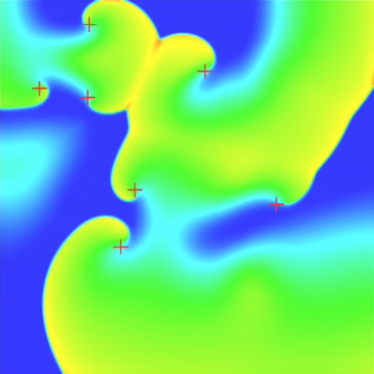Automatic Initiation and Investigation of Atrial Fibrillation in Electrically Remodeled Tissue
- Forschungsthema:Herzmodellierung
- Typ:Bachelorarbeit
- Betreuung:
- Bearbeitung:
-
Atrial fibrillation (AF) is the most common cardiac arrhythmia affecting approximately 1% of the population. The mechanisms responsible for this pathology are still incompletely understood. One reason for this is that some of the properties of the atrial tissue, as e.g. the initiation of AF can hardly be investigated or only invasively. Therefore, computer models of the human atrial electrophysiology are helpful tools to better understand the underlying mechanisms of AF.
In recent computational studies, the initiation of AF was investigated applying certain stimulation protocols to electrically remodeled tissue. However, the site and time of stimulation depend on the state of the tissue, i.e. if it is excitable again after the refractory period. Therefore, it is hard to compare simulations, in which the tissue properties differ.
Therefore, an algorithm for the automatic initiation of AF should be developed in this work. This algorithm should detect, if the tissue is excitable at certain different stimulus sites. Then, systematic stimulation should be carried out. Finally, detection, if a rotor or wave break initiation was successful, should take place. Another part of this work is then the investigation of the vulnerability of atrial tissue to AF.

